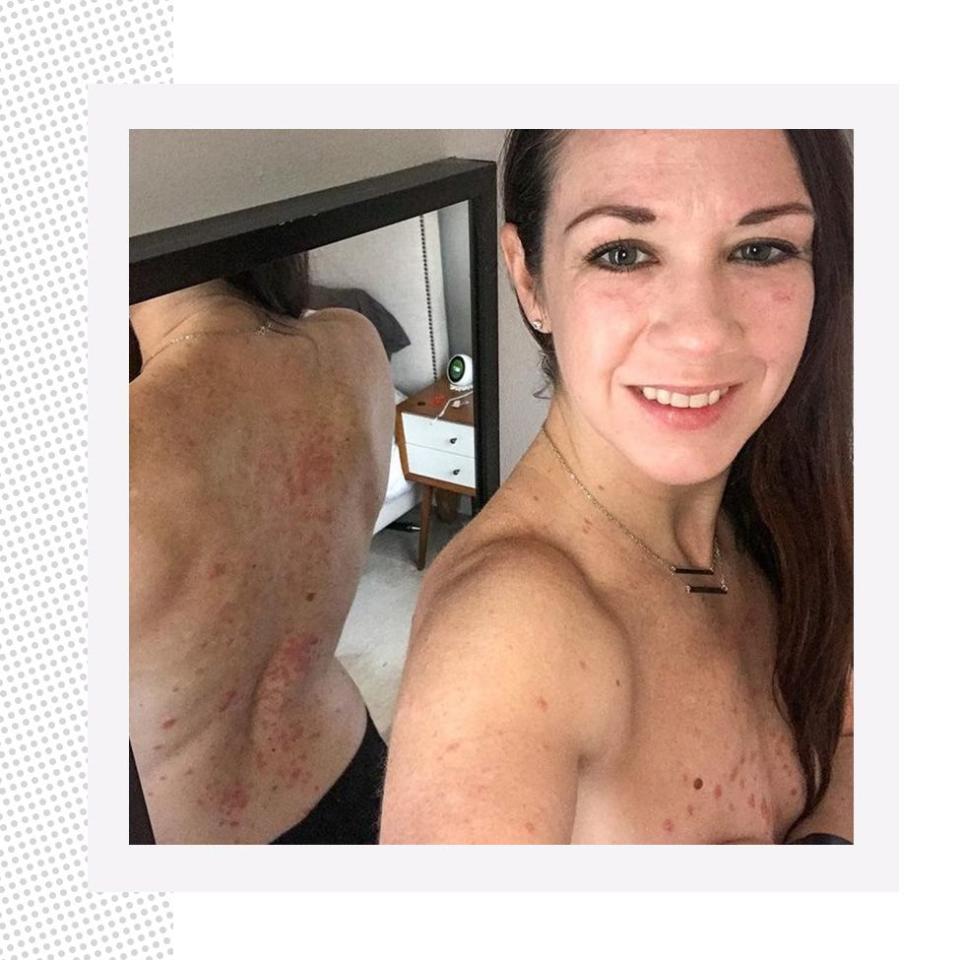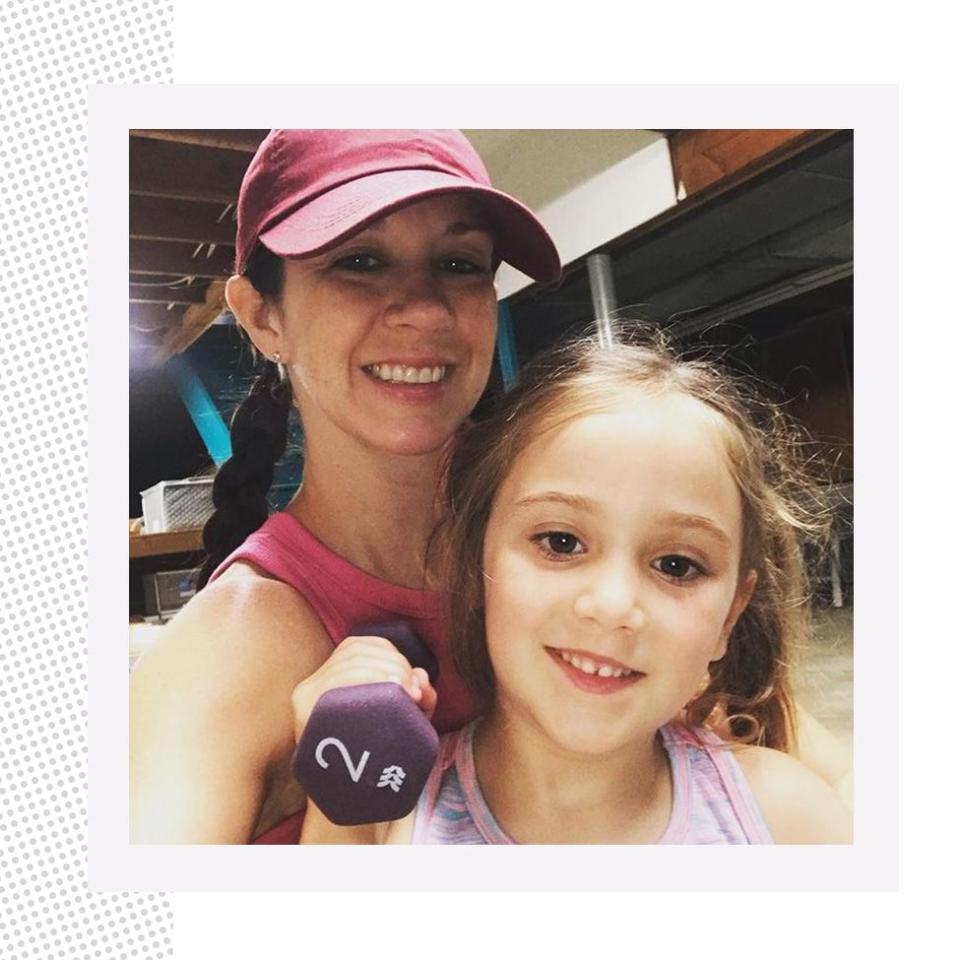After 23 Years Of Living With Psoriasis, Here’s How I Finally Got It Under Control

The summer after my junior year in high school I was diagnosed with guttate psoriasis, a type of psoriasis that occurs in kids and teens. It causes small, red, scaly spots all over my body. All I wanted to do was hang out with my friends at the beach, but since it looked like I had some sort of contagious skin disease, I stayed in my parents’ backyard, avoiding my peers out of shame.
Then, one day, I couldn’t stand feeling like I had to stick to the pool in our backyard, so I went to the beach with a few friends. But the adventure was short-lived. A woman accosted me, telling me I was irresponsible for being at the beach with chickenpox. I wish I could say that I explained to the woman that I had psoriasis and scolded her right back for being so presumptuous, but I was 15 years old. So, instead, I cried and had my mom pick me up early.
That was just the beginning of a long, difficult journey living with psoriasis. In those first few years after my diagnosis, I struggled with feelings of shame and embarrassment, and I dressed differently to cover up my spots. I also got bangs in an effort to hide my face as much as possible to more easily cover up my dry, scaly patches.
Finding a treatment plan that works
Over the years, I tried every type of medicine imaginable. When I was first diagnosed, my dermatologist took a conservative approach. Instead of starting me on steroids, which can thin the skin over time, he prescribed non-steroid topical treatments and phototherapy, which involves exposing skin to ultraviolet light during an in-office procedure. This initial treatment plan helped—but my spots would always come back.
As a teenager, it was hard to accept that my condition wasn’t going to go away. In the past, I’d get sick, go to the doctor, take some medicine, and then I’d be fine. But when my early psoriasis treatments didn’t make my plaques go away for good, I realized I’d be dealing with my condition for the rest of my life unless someone found a cure.

Throughout college, my psoriasis was pretty stable, with weeks of no symptoms followed by weeks when I was in a flare. When I moved to New York City after graduation and started working at an ad agency, I found a new dermatologist who suggested I try an injectable biologic—a medicine made from living cells that block the parts of the immune system that are responsible for the overgrowth of skin cells that cause psoriasis.
I was a little nervous—mostly about having to give myself a shot at home—but I was also so excited to try a new treatment. My skin was covered in spots, and I was hopeful that this new, well-researched option might work. Luckily, it did. I’ve been taking a biologic off and on for more than 15 years now.
More recently, my doctors have also taught me the importance of exercise, eating well, and keeping stress in check to manage my condition. By adding these holistic treatment options to my care routine, more often than not, my skin is spot-free. In the 23 years since my diagnosis, we’ve learned so much more about how to treat psoriasis from the inside out, and I’m grateful that my doctors take an approach that actually considers these factors. One thing I know for sure is that managing psoriasis requires more than focusing on your skin. It’s so important to focus on your physical and emotional health, too.
Learning to not let psoriasis dictate my life
When I was newly diagnosed, psoriasis consumed all of my thoughts and dictated so many of my decisions. But as time went on, I learned how to quiet the panic that used to take over when spots would resurface after a stretch of clear skin. At some point, I learned how to take it all in stride.
I think becoming a parent hastened that process. (I had my first daughter in 2015 and my second in 2016.) These days, I could care less if someone says something to me about my skin. I don’t have time for it. That’s not to say it doesn’t hurt if I catch someone staring at my skin and I can tell they’re wondering if I’m contagious. But I’m more likely to see the bright side. For example, if I have to get on a New York City subway and people give me some extra space when they see a bunch of spots on my arms or legs, that’s a great thing.

Finding a community of other people with psoriasis has also been a game-changer. A few years back, a simple Google searched turned up a number of amazing articles and blog posts written by people who understood exactly what I was going through: other psoriasis patients. In fact, it was such a great way to learn more about the disease that I decided to start my own blog, Just a Girl with Spots, to help others in the same boat as me.
Connecting with other people who have psoriasis is the best way I know how to bring more awareness to this disease. After all, the more we talk about it, the better the odds that someone else with psoriasis won’t be on a beach one day fielding rude comments about her “chickenpox.”
You Might Also Like